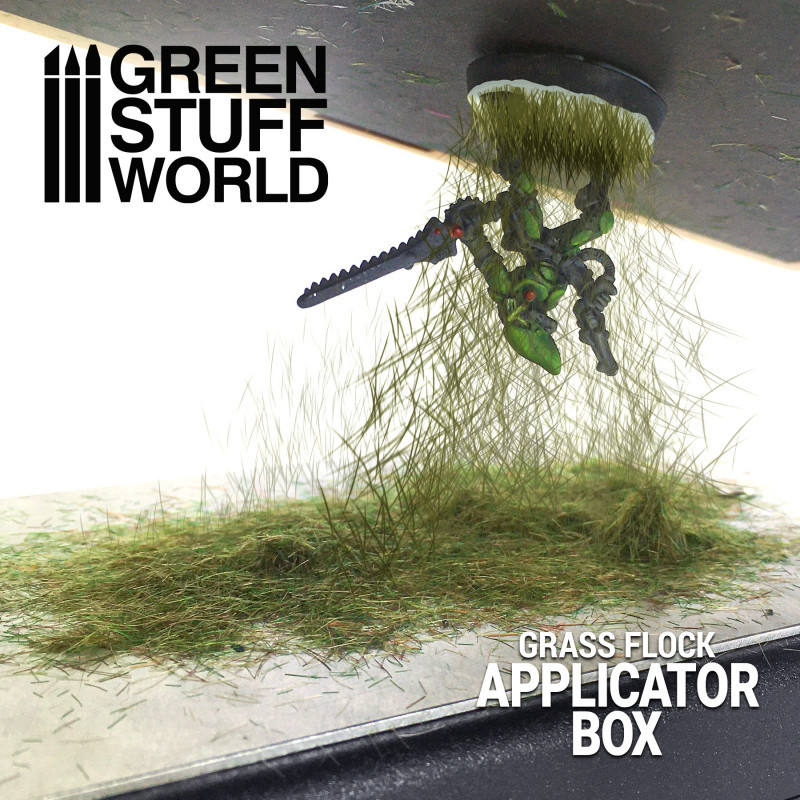Reference: 8436554360475ES
Brand: Green Stuff World
Metal sheets for magnets
Metal sheets for magnets | Rubber Steel Sheet Self Adhesive
 Cookie preferences
Cookie preferencesWe use our own and third party cookies to collect information to improve our services and to analyze your browsing habits. If you continue browsing, you accept their installation. You can configure your browser to prevent their installation.
Required cookies
Always active
These cookies are strictly necessary for the operation of the site, you can disable them by changing the settings of your browser but you will not be able to use the site normally.
Cookies used
Functional cookies
These cookies provide necessary information to applications of the website itself or integrated by third parties, if you disable them you may find some problems in the operation of the page.
Cookies used
Performance cookies
These cookies are used to analyze the traffic and behavior of customers on the site, help us understand and understand how you interact with the site in order to improve performance.
Cookies used
Guided cookies
These cookies can be from the site itself or from third parties, they help us to create a profile of your interests and to offer you advertising aimed at your preferences and interests.
Cookies used
The user is informed that he/she has the possibility of configuring his/her browser so that he/she is informed of the reception of cookies, being able, if he/she so wishes, to prevent them from being installed on his/her hard drive.
Below we provide links to various browsers, through which you can make such configuration:
Firefox from here: https://support.mozilla.org/es/kb/Deshabilitar cookies de terceros
Chrome from here: https://support.google.com/chrome/answer/95647?hl=es
Internet Explorer from here: https://support.microsoft.com/en-us/windows/manage-cookies-in-microsoft-edge-view-allow-block-delete-and-use-168dab11-0753-043d-7c16-ede5947fc64d
Safari from here: https://support.apple.com/es-es/guide/safari/sfri11471/mac
Opera from here: https://help.opera.com/en/latest/web-preferences/#cookies
Reference: 8436554360475ES
Brand: Green Stuff World
Metal sheets for magnets | Rubber Steel Sheet Self Adhesive
Reference: 8436554365050ES
Brand: Green Stuff World
Instant glue | CA glue
Reference: 5035167000490ES
Brand: Green Stuff World
Milliput Standard Yellow Grey - Epoxy putty for all kinds of applications.
Reference: 8435646509365ES
Brand: Green Stuff World
Black Plastic Bases | Black plastic base adapters 20-25mm

There are 5 products.
Reference: 8435646501581ES
Brand: Green Stuff World
Grass Flock Applicator Box | Flockbox
Reference: 8435646501574ES
Brand: Green Stuff World
Portable Static Grass Applicator | Flock applicator
Reference: 8435646510224ES
Grass Flock Applicator - Large Grid Mesh
Reference: 8435646510217ES
Grass Flock Applicator - Small Grid Mesh
Reference: 8436574508956ES
Brand: Green Stuff World
Tuft glue for applying tufts, flock, and other types of hobby vegetation
A flocking machine and a static grass applicator are tools that are used to add realistic vegetation to scale models, dioramas, and other hobby projects, and this way, creating realistic landscapes and many sorts of outdoor scenes. They can be especially useful for adding texture and detail to your projects' surfaces and can help bring your creations to life.
Adding flock to bases, dioramas and other places involves using a special adhesive, such as Tuft glue, to attach fibers (usually made of synthetic electrostatic materials) to a surface to create the appearance of the lawn, fur, or other textures. Nevertheless, PVA glue may also work with worse performance. The best static grass applicator must use an electrical charge to apply the fibers, creating a more realistic and lifelike appearance.
To use a flocking machine, you will typically apply the adhesive to where you want the lawn to be placed, then use the tool to apply the fibers over the adhesive. The static grass fibers will adhere vertically, remaining in a vertical position thanks to static electricity creating a lawn-like texture.
Types of flock machines:
A Grass Applicator Box is a tool with the shape of a box that is used to create tufts of lawns and shrubs. The difference with the Portable electrostatic flocking machine is that all lawn fibers will remain within a box instead of flying around the entire room. Besides, the item to be flocked must be able to fit inside the box.
It also works by using an electrical charge to force lawn-like fibers to fly toward a metal plate with opposite polarity.

A static grass applicator is commonly used in a variety of industries, including:
Green Stuff World is a company that sells a variety of modeling and hobby supplies, including flocking machines. You can purchase these from our official website or through one of their retail partners. For that, just visit their website and browse their variety of tools with different features and capabilities, so you can choose the one that best meets your needs.
An electrostatic flocking machine is a device used primarily in model making, particularly in model railroading and miniature wargaming, to apply fine flocking material to surfaces, creating realistic terrain features such as grassy fields, meadows, or lawns. Here's how it works:
Overall, the flocking machine allows model makers to efficiently and effectively create realistic grassy terrain on their dioramas, model railroad layouts, or wargaming landscapes by utilizing the principles of electrostatic electricity to secure the flock to a prepared surface.
They can be worth it depending on your specific needs and preferences. Here are some factors to consider:
In summary, if you're passionate about creating realistic landscapes or dioramas and value efficiency and detail, they can be a worthwhile investment. However, if you're only working on small projects occasionally or are satisfied with simpler methods of applying model grass, you may not need these types of tools. Ultimately, the decision depends on your specific needs, budget, and level of commitment to your hobby or craft.
Video: